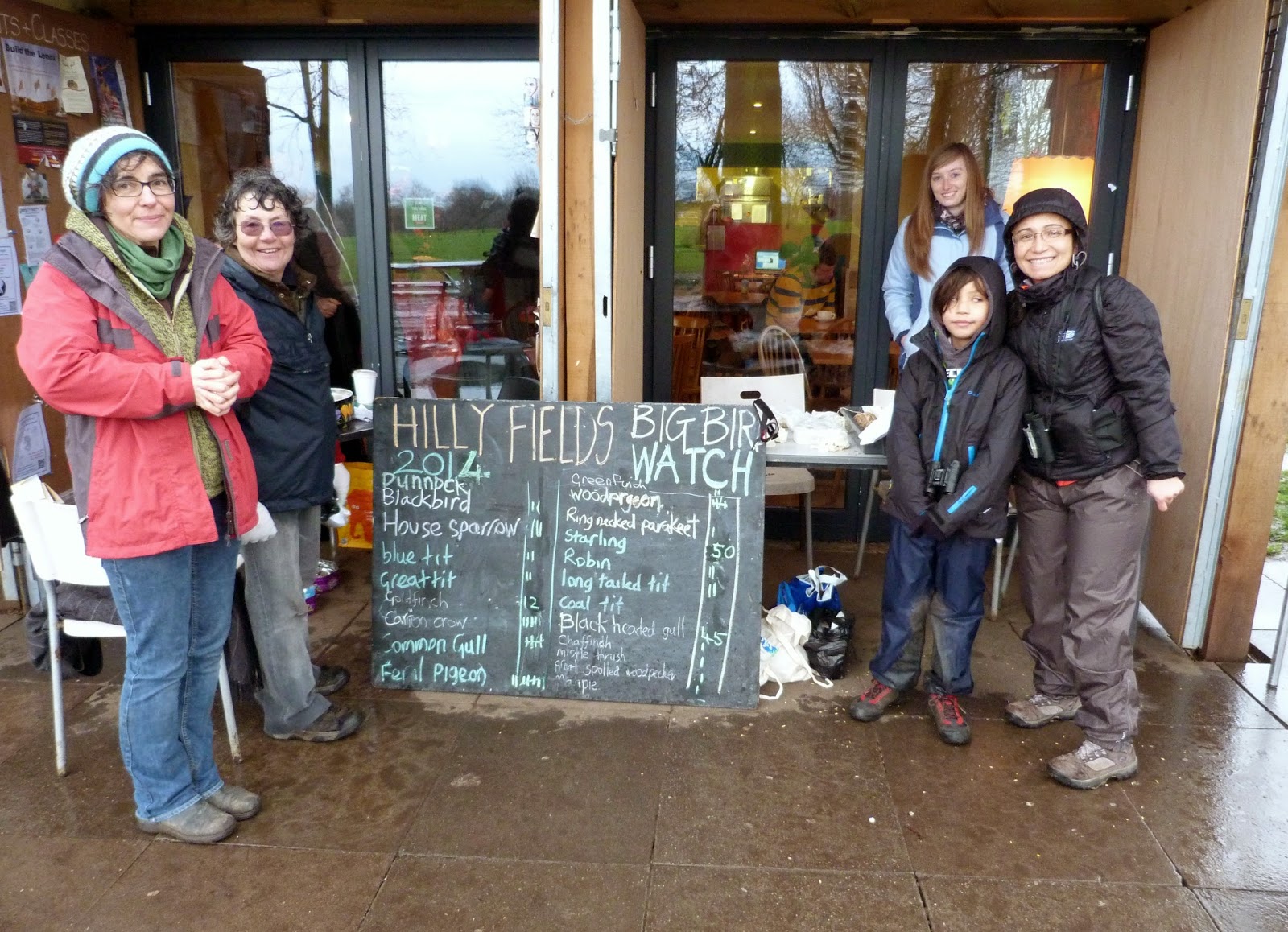We will have our stall outside the cafe as usual and will issue free sheets illustrating most of the birds likely to be seen. You can go round the park by yourselves or join the guided walk from 11.00-12.00. If you go round by yourselves, please remember the RSPB's golden rules:
(i) only count the maximum number of each species that you see at any one time (to avoid duplication); (ii) don't count birds that fly over without stopping - only birds within the park.
Please bring binoculars if you can (though not essential) and a pen or pencil.
Children are welcome and at the stall will be able to make bird feeders and fat balls which will be hung on trees in the park to help the birds this winter. Children are also welcome on the guided walk. In addition, the Bird Champion Quiz will be available - ten questions which will test your knowledge of avian matters or add to it. The quiz is more about references to birds in folklore and popular culture than obscure ornithological stuff and is graded 'moderately fiendish'.
Our Birdwatch will go ahead whatever the weather and as well as being fun for all the family is part of a nationwide event that contributes to our knowledge and understanding of birds and their conservation. Please come and join in.
 |
| Jenny Wren |
Hilly Fields Bird List: 2007-2014
Everyday
1. Blackbird (resident)
2. Black-headed Gull (resident - winter months)
3. Blue Tit (resident)
4. Carrion Crow (numbers vary but thought to be 4 residents)
5. Common Gull (resident - winter months)
6. Goldfinch (daily visitors in a flock of up to 20 birds on occasion)
7. Great Tit (resident)
8. House Sparrow (resident)
9. Magpie (numbers vary but thought to be 2/3 residents)
10. Ring-necked Parakeet (daily visitors in small numbers)
11. Robin (resident)
12. Wood Pigeon (resident)
13. Wren (resident)
Regular
14. Blackcap (summer and occasional winter migrants)
15. Chaffinch (probably resident)
16. Common Swift (seen overhead in summer months)
17. Dunnock (probably resident)
18. Feral Pigeon (small no, easily outnumbered by wood pigeons)
19. Great Spotted Woodpecker (resident pair)
20. Greenfinch (probably resident)
21. Jay (regular pair - possibly resident)
22. Long-tailed Tit (unsure whether residents)
23. Mistle Thrush (regular pair - probably residents)
24. Pied Wagtail (seen on bowling green and on stone pathways)
25. Starling (as many as 80 seen in winter months; disappear during summer months)
Occasional
26. Chiffchaff (heard since 2011 at spring and autumn migration times only)
27. Coal Tit (very occasional)
28. Collared Dove (very occasional)
29. Fieldfare (Very occasional in winter)
30. Goldcrest (possibly visitors from nearby Brockley/Ladywell cemeteries)
31. Green Woodpecker (also possibly visitors from above)
32. House Martin (not recorded since 2008)
33. Kestrel
34. Lesser Black-backed Gull
35. Nuthatch (very occasional)
36. Redwing (winter migrants)
37. Sparrowhawk
38. Stock Dove (very occasional)
39. Tawny Owl (heard by Cliffview Road and Eastern Rd residents, not seen)
40. Willow Warbler. Seen and heard for the first time September 2013)
Rare
41. Bullfinch (male, seen by Peter on 19/12/10 on SE edge of the park)
42. Cuckoo (heard once in May 2011)
43. Mallard (two seen by Rachel 10/3/08 approx 7am 'waddling up the park end of Eastern Rd')
44. Short-eared Owl (seen overhead 13/10/12 being mobbed by crows. Probably same bird recorded over London Wetland Centre earlier that day
45. Little Owl (seen 6/10/14 in bordering garden & flew off into the park)







